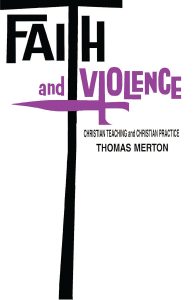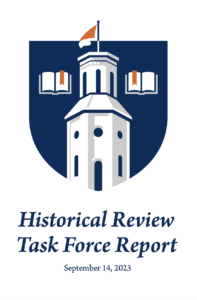 Summary: This books is a series of essays about protest, racism, violence and was the last book published before his death.
Summary: This books is a series of essays about protest, racism, violence and was the last book published before his death.
I decided to read Faith and Violence after reading Daniel Horan’s book on Merton earlier this year. I probably should have just bought a used copy of the book (which is what I think is probably the best and certainly the cheapest option), but instead I used interlibrary loan. The book I received was a first edition hardcover. There is something interesting in reading a first edition book that came out just over 50 years ago and which clearly had been read, but not by all that many people.
I didn’t have time to read the whole book. It came about a week before I went on vacation and I was busy getting ready for vacation or I was actually on vacation. Almost all of the reading I did (about half the book) was in the car. I was primed to read it with a view toward modern use of Merton’s ideas because of Horan’s essays. And it felt like he was writing with a more contemporary approach toward activism and faith and social problems than some other contemporaries of the era. Part of what I appreciated about Horan’s essays is that he both talked about how we can use Merton in contemporary thought and how Merton was a person of his time and limited in some ways by that historical position.
What I was most interested in is how much Merton approached social issues as systems not individual acts or the acts of unattached individuals. This is not just a book about violence “out there” but a discussion with other Christians about how we as Christians uphold violence. In the introduction he explicitly calls out Reinhold Niebuhr’s “realism” as justifying the use of force and violence. Merton is calling for nonviolent resistance to injustice. Faith and Violence would have been published just before Martin Luther King Jr’s assassination. That whole year, and really since 1963, the role of nonviolence resistance was being questioned in the civil rights movement. And in 1968, the resistance to the war in Vietnam was strengthening.



 Born a Crime: Stories From a South African Childhood by Trevor Noah
Born a Crime: Stories From a South African Childhood by Trevor Noah The March Trilogy by John Lewis and Andrew Aydin with illustrator Nate Powell
The March Trilogy by John Lewis and Andrew Aydin with illustrator Nate Powell As You Wish: Inconceivable Tales from the Making of The Princess Bride by Cary Elwes
As You Wish: Inconceivable Tales from the Making of The Princess Bride by Cary Elwes Prophetic Lament: A Call for Justice in Troubled Times by Soon-Chan Rah
Prophetic Lament: A Call for Justice in Troubled Times by Soon-Chan Rah